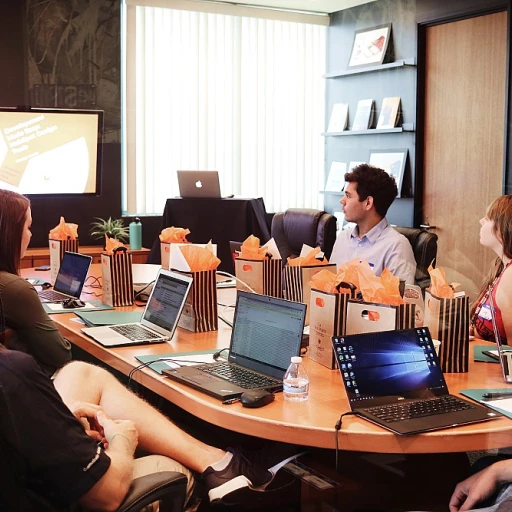
Understanding High Potential Employees
Recognizing Top Talent Within Your Organization
Understanding high potential employees forms the foundation of developing effective management and leadership skills. These individuals stand out due to their exceptional performance, ability to drive team success, and the promise they hold for future roles in their company. Organizations aiming for expansion and innovation need to focus on nurturing these talents further, as they play a pivotal role in sustaining growth and competitiveness.
To identify these valuable employees, managers and supervisors should pay attention to certain key attributes. High potential employees often exhibit a profound interest in enhancing their skills in leadership, showing readiness to take on more challenging tasks and responsibilities. They also consistently demonstrate a combination of skills that align with the organization's vision and values.
Leadership training courses, seminars, and webinars can greatly benefit managers and supervisors in recognizing these individuals. Training helps in honing the necessary skills to not only spot high potential employees but also nurture their growth effectively. Engaging in continuous learning experiences, like live virtual sessions, is crucial to staying informed about new strategies in performance management and supervisory training.
As we look further into identifying training needs and designing customized training programs, it's essential for supervisory roles to not only support skills development but also encourage a culture of continuous learning. This commitment will undoubtedly enhance the overall performance of both managers and their teams, paving the way for successful long-term growth.
Identifying Training Needs
Recognizing Development Opportunities
Effective leadership training for managers and supervisors starts with correctly identifying the training needs of high potential employees. Organizations looking to foster management skills must first take a step back and evaluate what specific areas require attention. This approach ensures that the course aligns with both individual and team performance goals.- Assess Current Skills: Begin by evaluating the existing skill set of both supervisors and managers. Identify gaps in leadership skills, communication, decision-making, and strategic thinking. A comprehensive assessment will help to tailor the learning experience to the unique needs of your employees.
- Performance Reviews: Utilize performance reviews as a reliable tool to highlight strengths and weaknesses in current roles. Feedback from these evaluations provides insights into areas where training development can have the most impact, enhancing management leadership capabilities.
- Employee Feedback: Involve employees in the identification process by using surveys or one-on-one sessions. Input from the employees themselves provides a valuable perspective on what skills need further development and which training courses they find beneficial.
- Organizational Goals Alignment: Ensure the training courses align with overall business objectives. This alignment helps employees see the relevance of their learning journey and encourages them to apply the new skills in real-time situations, thus filling gaps and improving organizational performance.
Designing Customized Training Programs
Crafting Tailored Training Experiences
Designing customized training programs for high potential employees is crucial for nurturing their leadership skills and enhancing their performance. A one-size-fits-all approach often falls short in addressing the unique needs of these individuals. Instead, a personalized strategy that considers the specific strengths and areas for improvement of each employee is essential.
To begin with, it is important to assess the current skill levels and future potential of managers and supervisors. This assessment helps in identifying the gaps that need to be filled through targeted training. By understanding these needs, organizations can develop a training course that aligns with both individual and organizational goals.
Here are some key elements to consider when designing customized training programs:
- Individual Learning Paths: Tailor the training content to match the learning style and pace of each employee. This ensures that the training is effective and engaging.
- Blended Learning Approaches: Combine various training methods such as live virtual sessions, seminars, webinars, and on-the-job training to provide a comprehensive learning experience.
- Focus on Practical Application: Encourage employees to apply new skills in real-world scenarios. This not only reinforces learning but also boosts confidence and performance.
- Feedback and Adjustments: Regularly gather feedback from participants to make necessary adjustments to the training program. This ensures that the training remains relevant and impactful.
By implementing these strategies, organizations can create a dynamic training environment that supports the continuous development of their high potential employees. For more insights on how to effectively mentor and develop these individuals, consider exploring this resource.
Implementing Effective Training Techniques
Strategic Implementation of Training Techniques
When shaping the future leaders within your organization, effective implementation of training techniques is crucial. Recognizing that each employee, especially those tagged as high potential, possesses distinct learning styles and paces, tailor the approaches to maximize engagement and information retention. Adopt a variety of training methods, ensuring a blend of theoretical and practical approaches:- Live Virtual Sessions: Engage your employees through interactive webinars and seminars that allow real-time participation and feedback.
- On-the-Job Training: Enable managers and supervisors to learn through real-world experiences. This allows the integration of theoretical knowledge in practical scenarios, solidifying their skills.
- Workshops and Interactive Courses: These provide a hands-on approach, where employees can engage in role-play and scenarios to develop leadership and management skills.
- E-Learning Modules: Offer courses that employees can progress through at their own pace, ideal for continuous development and filling specific skill gaps in management leadership.
Measuring Training Outcomes
Evaluating the Impact of Training Programs
Measuring the outcomes of training programs is crucial to ensure that the investment in developing leadership skills among managers and supervisors is yielding the desired results. This involves assessing both the immediate and long-term impacts on performance and management skills.
Key Performance Indicators
To effectively measure training outcomes, organizations should establish clear Key Performance Indicators (KPIs). These KPIs might include improvements in team performance, enhanced management leadership capabilities, and the ability to handle supervisory challenges. Monitoring these indicators over time provides valuable insights into the effectiveness of the training courses.
Feedback and Continuous Improvement
Gathering feedback from participants is another essential step. Managers and supervisors can provide insights into how the training has impacted their day-to-day responsibilities and leadership skills. This feedback can be collected through surveys, interviews, or live virtual discussions, allowing for adjustments and improvements in future training development.
Performance Management Systems
Integrating training outcomes with performance management systems helps in tracking the progress of employees who have undergone supervisory training. This integration ensures that the skills acquired during training are being effectively applied in the workplace, leading to tangible improvements in management and leadership performance.
Long-term Development and Support
Finally, continuous development and support are vital for sustaining the benefits of training programs. Organizations should provide ongoing learning opportunities, such as seminars webinars and additional training courses, to help managers supervisors refine their skills over time. This commitment to continuous development ensures that high potential employees remain engaged and effective in their roles.
Continuous Development and Support
Ongoing Advancement and Assistance
For training efforts to reach their full potential, continuous development and support are key elements. High potential employees benefit immensely from a system that does not just stop at the end of a course or seminar. Rather, it should provide an evolving pathway for growth and improvement.
Managers and supervisors need to ensure that they routinely engage with their team through ongoing feedback and guidance. By establishing regular one-on-one meetings, they can help employees navigate challenges, reinforce learning, and motivate them to pursue further goals.
Moreover, the implementation of performance management systems proves vital. These systems enable supervisors and managers to track progress effectively, ensuring that skills learned during training can be put into practice and refined over time. Supervisory training, when paired with performance management, creates a robust framework conducive to employee development.
Offering additional learning opportunities such as live virtual courses, leadership training seminars, and webinars also keeps the momentum going post-training. This approach caters to different learning styles and schedules, giving employees the flexibility to fill any gaps in their skillset.
Finally, fostering a culture of continuous learning and improvement encourages all employees, especially high potentials, to take ownership of their personal development. Managers and supervisors play a crucial role in creating an environment where asking questions and seeking new knowledge is not just encouraged, but expected as part of their professional journey.












